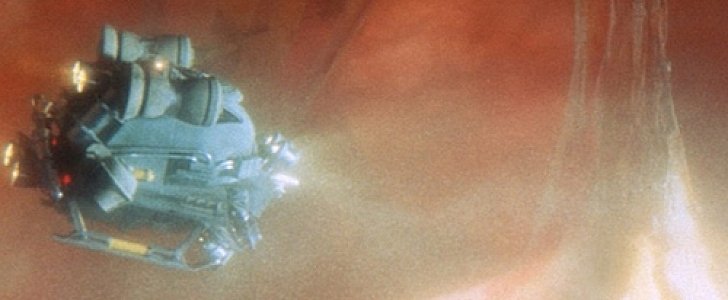About 28 years ago, Steven Spielberg would once again surprise the world with a huge hit that told the story of a scientifically miniaturized marine unexpectedly finding itself floating inside the body of a hypochondriac. The movie was called Innerspace. Now, a team of researchers has proven minuscule vehicles could actually be created and used on a molecular level.
Humans have been working on means of transportation at the molecular level for the obvious reasons. It’s an ongoing R&D stage that has seen several labs coming up with similar solutions. One of the major setbacks is that the majority of these nanostructures also release toxic substances once they travel in solution.
Researchers at Rice University in Huston, Texas, have recently published an article claiming they have developed a new type of molecular structure that is using light to move forward. And going from point A to point B happens quite fast too, at least on a nano scale.
Each of the single-molecule, 244-atom-sized submersibles built in the Rice lab of chemist James Tour has a motor powered by ultraviolet light. With each full revolution, the motor’s tail-like propeller moves the sub forward 18 nanometers. It may not sound a lot, but imagine this: the engines run at more than a million RPM. So far, these are the fastest-moving molecules ever seen in solution.
Scientists still need to figure out how to steer these tiny machines, especially that their molecular motors are powerful enough to drive the sub-10-nanometer subs through solutions of moving molecules of about the same size. Considering it would be similar to a person running a basketball court with 1,000 people throwing basketballs at them, steering is vital.
“The motors, which operate more like a bacteria’s flagellum than a propeller, complete each revolution in four steps. When excited by light, the double bond that holds the rotor to the body becomes a single bond, allowing it to rotate a quarter step. As the motor seeks to return to a lower energy state, it jumps adjacent atoms for another quarter turn. The process repeats as long as the light is on.”
Researchers at Rice University in Huston, Texas, have recently published an article claiming they have developed a new type of molecular structure that is using light to move forward. And going from point A to point B happens quite fast too, at least on a nano scale.
Each of the single-molecule, 244-atom-sized submersibles built in the Rice lab of chemist James Tour has a motor powered by ultraviolet light. With each full revolution, the motor’s tail-like propeller moves the sub forward 18 nanometers. It may not sound a lot, but imagine this: the engines run at more than a million RPM. So far, these are the fastest-moving molecules ever seen in solution.
Scientists still need to figure out how to steer these tiny machines, especially that their molecular motors are powerful enough to drive the sub-10-nanometer subs through solutions of moving molecules of about the same size. Considering it would be similar to a person running a basketball court with 1,000 people throwing basketballs at them, steering is vital.
Nanocars
If molecular submersibles seem like some odd contraption, you should know the same team of researchers has also developed nanocars a decade ago. They created single-molecule cars with four wheels, axles and independent suspensions that could be driven across the surface.“The motors, which operate more like a bacteria’s flagellum than a propeller, complete each revolution in four steps. When excited by light, the double bond that holds the rotor to the body becomes a single bond, allowing it to rotate a quarter step. As the motor seeks to return to a lower energy state, it jumps adjacent atoms for another quarter turn. The process repeats as long as the light is on.”
